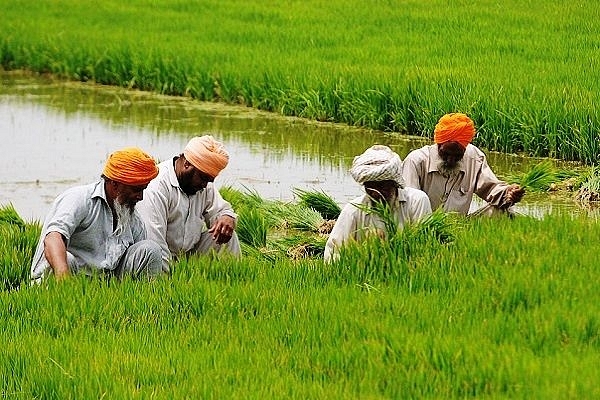Insta
Israeli Technology Helps Indian Farmers Increase Productivity, Substantially Saver Water And Avoid Pesticides

Farmers working in fields (Bharat Bhushan/Hindustan Times via Getty Images)
Farmers in Gujarat have benefited from Israel’s agricultural technology which has helped them to increase their productivity.
One such example was reported by Krishi Jagran in which a Mango and dates farmer visited Israel and learnt various Israeli farming technologies like drip irrigation, canopy management and improved irrigation techniques.
Israel, which has just 20 per cent naturally arable land has scientifically developed its agricultural practices to turn itself into a leading agri-tech nation. Even though the investments are high, the outputs make up for it.
A Bhuj farmer named Ishwar Pindoria who now grows Kesar mangoes, exotic date variety Barhi, went to Israel in 2005 to learn various farming techniques and now implements methods like:
- Sub-surface drip irrigation
- Irrigation scheduling as per the rate of evaporation measured with Class-A pan evaporimeter
- Canopy management for the mango plantation
- Bunch management and fruit-thinning in date palm
- Post-harvest management and grading, packaging in date palm
- Pest and disease management
- Soil-moisture monitoring and irrigation scheduling
- Fertigation management
Using the Israeli technology, farmers manage to save over 60 per cent water and get a better crop yield with more savings.
The sub-surface irrigation means that there is virtually no water evaporation and weed growth. The crops also don’t require the use of pesticides except for in some exceptional cases.
To help more and more farmers avail the benefits of Israeli technology, the Indian and Israeli governments are working together to set up centre of excellence in various states.
Introducing ElectionsHQ + 50 Ground Reports Project
The 2024 elections might seem easy to guess, but there are some important questions that shouldn't be missed.
Do freebies still sway voters? Do people prioritise infrastructure when voting? How will Punjab vote?
The answers to these questions provide great insights into where we, as a country, are headed in the years to come.
Swarajya is starting a project with an aim to do 50 solid ground stories and a smart commentary service on WhatsApp, a one-of-a-kind. We'd love your support during this election season.
Click below to contribute.
Latest